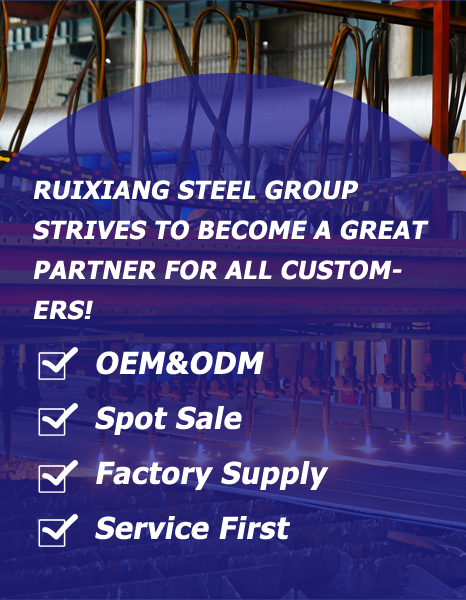Techniques for Welding Square Steel Tube to Avoid Burn-Through and Warping
 Click:196Edit: Admin
Click:196Edit: Admin Time:2025-10-07 18:40:02
Time:2025-10-07 18:40:02
Techniques for Welding Square Steel Tube to Avoid Burn-Through and Warping
Welding square steel tubes presents unique challenges, particularly the risks of burn-through and warping due to the material's thin walls and concentrated heat zones. Mastering proper techniques is essential for achieving strong, clean welds while preserving the structural integrity of the tubing. As a trusted supplier of quality steel products, Ruixiang Steel provides insights into effective welding methods that minimize these common issues.
Understanding the Challenges
Square steel tubes, especially those with thinner walls, are prone to:
Burn-through: Excessive heat penetration causing holes in the metal
Warping: Thermal distortion from uneven heating and cooling
Sugaring: Oxidation on the inside of the tube where shielding gas cannot reach
These problems stem from the concentrated heat input and the geometry of square sections, which dissipate heat unevenly compared to solid materials.
Preparation Techniques
Proper preparation significantly reduces welding defects:
Fit-up and Gap Control: Maintain consistent, tight joints—ideally with no gap for thin materials (<3mm)
Cleanliness: Remove all oil, rust, and contaminants from the weld area
Back Purging: For critical applications, use argon gas on the inside to prevent sugaring
Tack Welding: Place small, spaced tack welds (1-2cm long, 15-20cm apart) to maintain alignment
Welding Parameter Optimization
Correct settings are crucial for thin-walled square tubes:
Lower Amperage: Reduce heat input—for 1.5mm wall, use 70-90A; for 3mm, 110-130A
Faster Travel Speed: Move quickly to minimize heat accumulation
Pulse Welding: Use pulsed MIG or TIG to control heat input precisely
Electrode Selection: Smaller diameters (1.6mm MIG wire or 2.0mm TIG electrode) for better control
Welding Techniques by Process
MIG Welding:
Use 75% argon/25% CO² gas mixture for better penetration control
Employ the "stitch" or "skip" technique—short welds with cooling periods
Maintain a 10-15 degree push angle and consistent wire feed speed
TIG Welding:
Ideal for thin materials (0.5-3mm) with superior heat control
Use a sharp tungsten electrode and high-frequency start
Add filler metal consistently to prevent thinning of the base material
Specialized Approaches
Heat Sinks: Place copper backing bars behind the weld to dissipate heat
Interpass Temperature Control: Allow the metal to cool below 150°C between passes
Alternating Weld Sequence: Weld opposite sides alternately to balance thermal stress
Clamping and Fixturing: Use strong backs and jigs to restrain movement during welding
Post-Weld Considerations
Gradual Cooling: Avoid quenching; let the assembly cool naturally
Stress Relief: For critical applications, consider thermal stress relief treatment
Visual Inspection: Check for uniformity, penetration, and any signs of distortion
Ruixiang Steel's Quality Assurance
Our square steel tubes feature:
Consistent wall thickness and chemical composition
Clean, scale-free surfaces for optimal welding conditions
Certified mechanical properties ensuring predictable welding behavior
Technical data sheets with recommended welding parameters
Conclusion
Successfully welding square steel tubes requires a balanced approach combining proper preparation, optimized parameters, and controlled technique. By managing heat input through appropriate settings and welding methods, fabricators can achieve strong, aesthetic welds without compromising the tube's structural integrity. Ruixiang Steel supports these efforts by providing consistently high-quality square tubing and technical guidance tailored to specific fabrication challenges.
 Click:196Edit: Admin
Click:196Edit: Admin Time:2025-10-07 18:40:02
Time:2025-10-07 18:40:02

